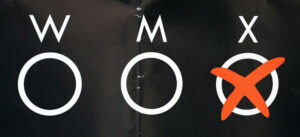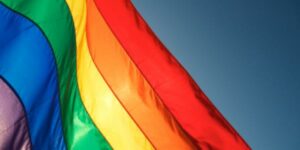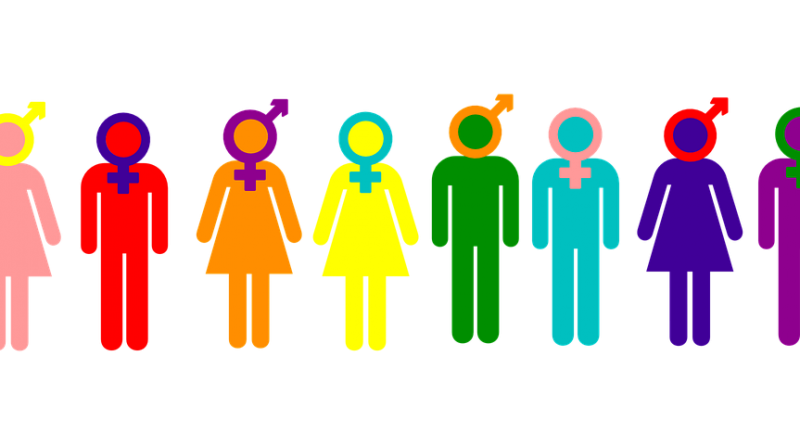LGBTQ and intersexuality are two important aspects of human diversity that require understanding and acceptance. In this article, we will explore the meaning and significance of LGBTQ and intersexuality, shedding light on the experiences of individuals who identify as such. It is crucial to foster an inclusive society that embraces and respects all individuals, regardless of their sexual orientation or gender identity.
Contents
Understanding LGBTQ

The term LGBTQ represents a diverse range of sexual orientations and gender identities. LGBTQ stands for lesbian, gay, bisexual, transgender, and queer/questioning. Sexual orientation refers to an individual’s emotional, romantic, or sexual attraction to others, while gender identity relates to a person’s deeply felt sense of being male, female, or another gender.
The Spectrum of Sexual Orientation
Within the LGBTQ community, there is a spectrum of sexual orientations. Homosexuality refers to same-sex attraction, while bisexuality encompasses attraction to both the same and different genders. Pansexuality, on the other hand, involves attraction to people regardless of their gender identity. Understanding the nuances of these orientations helps dispel common misconceptions and stereotypes.
Gender Identity and Expression
Gender identity is an individual’s internal sense of their gender, which may or may not align with the sex assigned to them at birth. Transgender individuals identify with a gender different from their assigned sex, while gender non-conforming people may express themselves in ways that defy traditional gender norms. It is essential to recognize and respect each person’s gender identity and expression.
Intersexuality

Intersexuality refers to a natural biological variation in human sex characteristics that do not fit typical binary notions of male or female. Intersex individuals are born with a combination of physical traits, such as chromosomes, hormones, reproductive anatomy, and secondary sexual characteristics, that do not conform to the typical definitions of male or female.
It’s important to understand that intersex is not the same as being transgender or having a diverse gender identity. Intersex is specifically related to physical characteristics and biological variations, whereas gender identity is about how an individual experiences and identifies themselves in terms of being male, female, or non-binary.
Intersex variations can manifest in various ways. Some examples include atypical chromosomal patterns, such as having an extra X or Y chromosome (such as XXY or XYY), variations in sex hormone levels or receptors, differences in reproductive organs, or ambiguous genitalia that do not align with typical male or female anatomy.
Intersectionality and LGBTQ+ Rights
Intersectionality is a concept that recognizes the interconnected nature of various forms of social oppression and discrimination. It was originally coined by legal scholar Kimberlé Crenshaw in 1989 and has since been widely adopted in feminist theory, social justice movements, and discussions of identity and power dynamics.
When discussing LGBTQ+ rights through an intersectional lens, it acknowledges that individuals can experience overlapping forms of discrimination and marginalization based on their sexual orientation, gender identity, race, ethnicity, socioeconomic status, disability, and other social factors. Intersectionality emphasizes the importance of recognizing and addressing these interconnected systems of oppression.
For example, a person who identifies as both LGBTQ+ and a person of color may face unique challenges and forms of discrimination that result from the combination of their sexual orientation, gender identity, and racial background. They may experience racism within LGBTQ+ spaces or homophobia/transphobia within their racial or ethnic community. Intersectionality helps to shed light on these complex experiences and highlights the need for inclusive and comprehensive approaches to LGBTQ+ rights and activism.
Support and Resources for LGBTQ and Intersex Individuals

Support and resources for LGBTQ+ and intersex individuals have significantly expanded in recent years. Many organizations, both local and international, provide assistance, advocacy, and resources to promote the well-being and rights of these communities. Here are some common avenues of support and resources:
- LGBTQ+ Centers: LGBTQ+ community centers exist in numerous cities worldwide. These centers offer a variety of services, such as counseling, support groups, social events, educational programs, and referrals to other resources. Examples include the LGBT Community Centers in the US and the LGBT Foundation in the UK.
- LGBTQ+ Helplines: Helplines provide confidential and anonymous support to individuals in need. These services often include emotional support, information, referrals, and crisis intervention. Organizations like The Trevor Project (US) and Switchboard (UK) offer helplines specifically for LGBTQ+ individuals.
- LGBTQ+ Support Groups: Support groups bring together people who share similar experiences and identities, allowing them to connect, share stories, and provide support. These groups can be found locally through community centers or online through platforms like meetup.com or social media groups.
- Online Resources and Communities: Numerous websites and online platforms provide a wealth of information, educational materials, and community support for LGBTQ+ and intersex individuals.
- Mental Health Services: Mental health support tailored to LGBTQ+ and intersex individuals is crucial. Many mental health providers specialize in working with these communities and can offer affirming and knowledgeable care. Mantracare and Therapymantra are good resources for finding such providers.
Overcoming Prejudice and Promoting Acceptance

Overcoming prejudice and promoting acceptance of LGBTQ+ and intersex individuals is a collective effort that involves individuals, communities, and institutions. Here are some strategies that can help in fostering a more inclusive and accepting society:
- Education and Awareness: Education plays a crucial role in challenging stereotypes, dispelling myths, and increasing understanding. Schools, workplaces, and communities should provide comprehensive education about sexual orientation, gender identity, and intersex variations. This includes teaching about LGBTQ+ history, experiences, and contributions to society.
- Advocacy and Visibility: Promoting positive representation and visibility of LGBTQ+ and intersex individuals can help combat prejudice. Encouraging diverse representation in media, literature, and the arts can foster empathy and understanding. Furthermore, supporting LGBTQ+ and intersex rights organizations and participating in pride events can also demonstrate solidarity and show support.
- Challenging Discrimination: It’s important to speak out against discriminatory practices, policies, and attitudes. This can involve addressing homophobic, transphobic, and intersex-phobic language or behavior, whether it occurs in personal interactions, social settings, or institutional settings. Advocating for legal protections and equal rights for LGBTQ+ and intersex individuals is also crucial.
- Building Alliances and Safe Spaces: Allies, whether individuals or organizations play a significant role in promoting acceptance. LGBTQ+ and intersex individuals need to have supportive spaces and networks where they can freely express themselves. By creating safe and inclusive environments, allies can foster a sense of belonging and create opportunities for dialogue and learning.
- Training and Sensitization: Institutions, including schools, workplaces, and healthcare settings, should provide training and sensitization programs to educate their members about LGBTQ+ and intersex issues. Furthermore, this can help create more inclusive policies, practices, and services, and ensure that LGBTQ+ and intersex individuals are treated with dignity and respect.
- Collaboration and Partnerships: Collaboration between LGBTQ+ and intersex organizations, community groups, and institutions can amplify efforts to combat prejudice and promote acceptance. Furthermore, by working together, sharing resources, and coordinating initiatives, it’s possible to create a broader impact and effect positive change.
- Legislation and Policy Reform: Advocating for legal protections and policy reform is essential for ensuring the rights and equal treatment of LGBTQ+ and intersex individuals. This includes advocating for anti-discrimination laws, gender recognition laws, healthcare access, and comprehensive sex education that is inclusive of diverse sexual orientations, gender identities, and intersex variations.
- Personal Engagement and Support: Individuals can make a difference by being open-minded, supportive, and accepting. Engage in conversations about LGBTQ+ and intersex topics, challenge stereotypes within your social circles, and offer support to individuals who may be facing prejudice or discrimination.
Conclusion
Understanding and embracing LGBTQ and intersexuality are essential for building a more inclusive society. By educating ourselves, challenging stereotypes, and supporting LGBTQ and intersex individuals, we can create an environment that celebrates diversity and promotes equality for all. Let us work together to create a world where everyone can live authentically and thrive.
Life may sometimes be challenging for people from the LGBTQ community, but Online LGBTQ Counseling can help. Get experienced LGBTQ therapists at PrideMantra: Book a trial LGBTQ therapy session.


